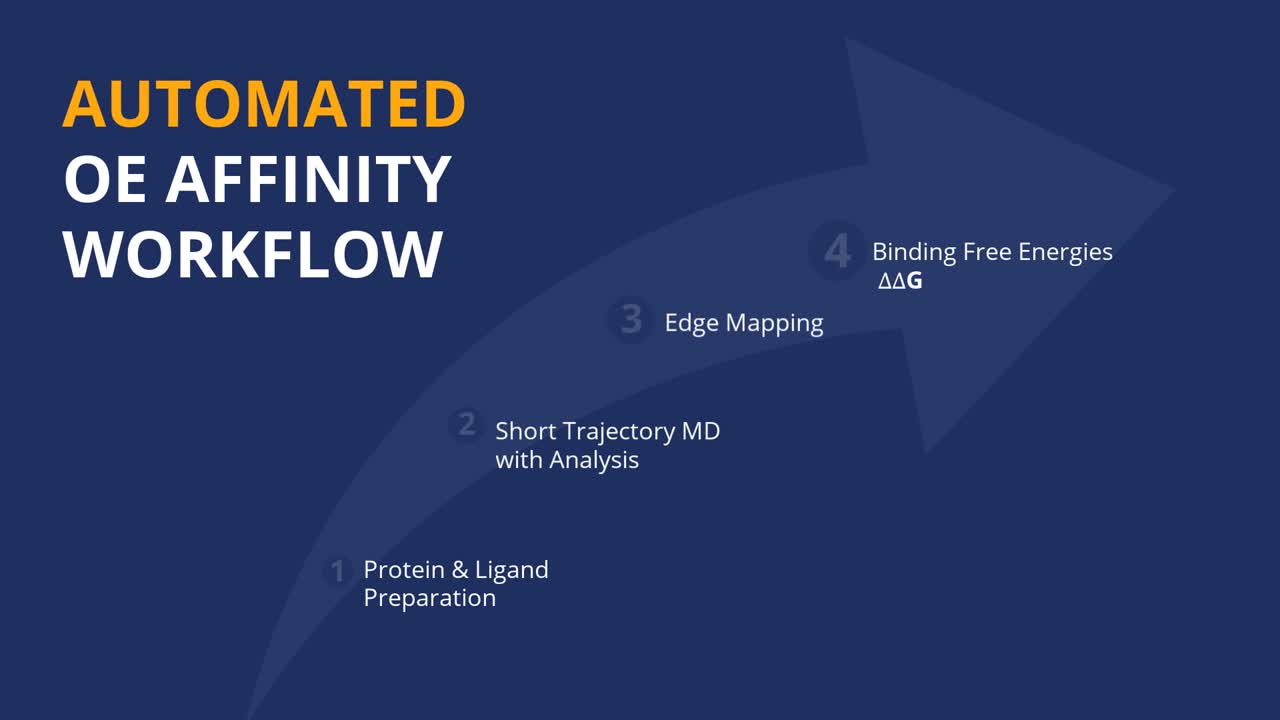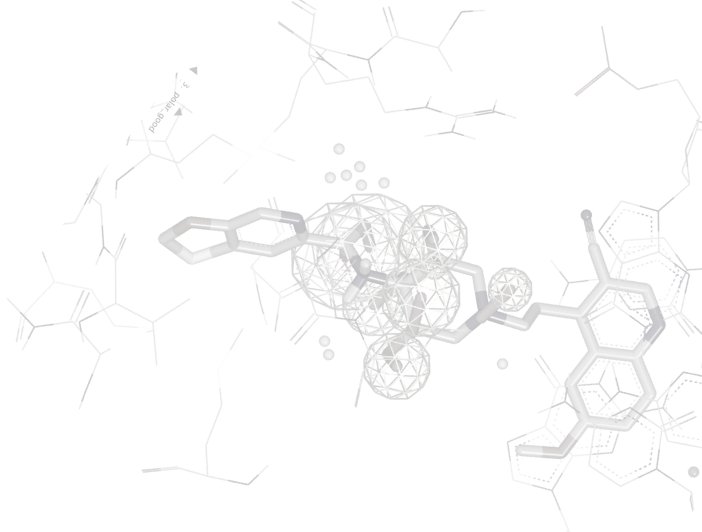
Fast Free Energies Predictions
Discover drugs with speed and ease using the OpenEye Affinity (OE Affinity) set of tools designed to accurately estimate binding free energies.
With a focus on cutting-edge science and technology, OE Affinity simplifies the process of drug discovery by delivering powerful tools directly to your web browser on Orion® cloud modeling platform. There's no software to install; all you need is a web browser. Simply log in and get started!
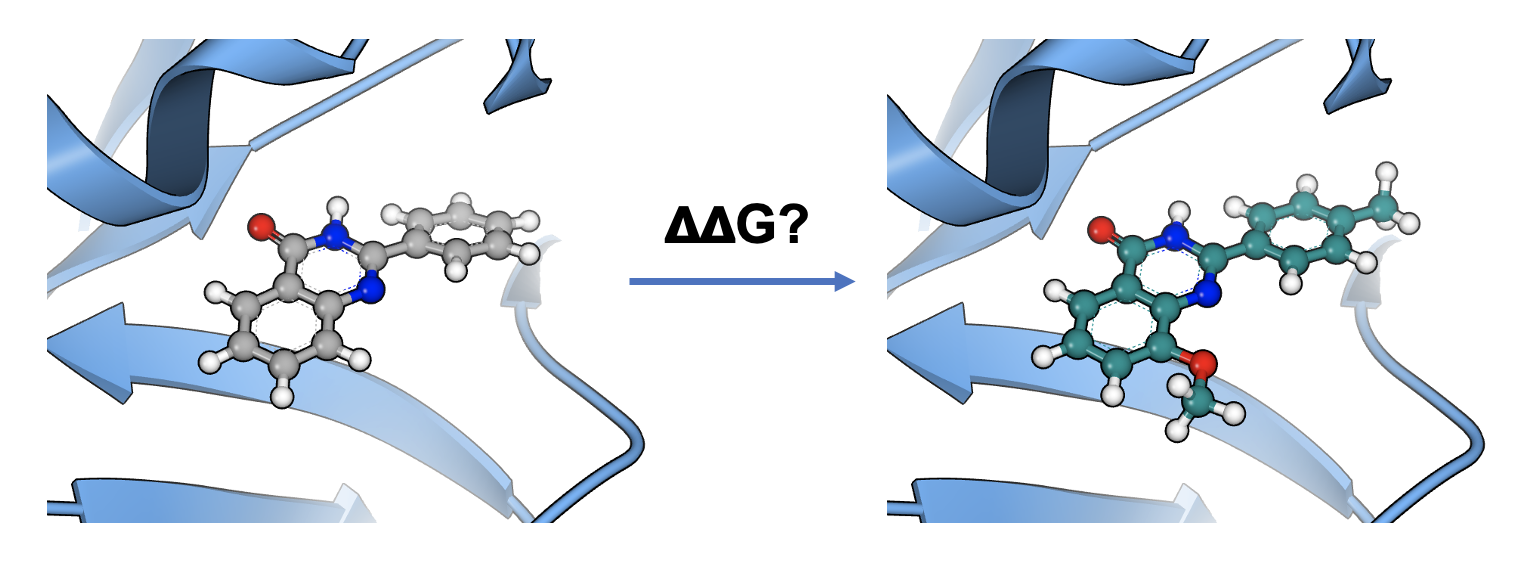
Features
- Proven. Adapted from published work from the DeGroot Lab at Max Planck Institute
- Accurate. Validated on internal and external datasets
- Flexible. Edge mapper options for connecting ligands include OELOMAP, Star Map, Binary Star Map, and Multi-Star Map
- Easy-to-Use. Quickly get up and running in a familiar Orion web-based environment
- Automated. Simple process from system set-up, mapping, end-point equilibration, and free energy calculation
- Performance. Extremely fast and highly parallelizable; run an entire ligand dataset in a few hours
- Control. Highly customizable for novice use and expert control
- Integrated. Easily combine with other ligand- and structure-based methods
Rooted in Science, Optimized for Performance, Made for You
OpenEye provides efficient and effective solutions for estimating binding free energies of protein-ligand complexes, with various options tailored to suit your needs:
- OE SZYBKI: When speed is crucial. A highly efficient method for performing force field energy evaluations or geometry optimizations on small molecule ligands and protein-ligand complexes.
- OE Affinity Scoring: When computational cost is a concern. A fast, approximate solution that combines physics-based and knowledge-based scoring. Fully automated for ease of use, OE Affinity Scoring delivers quick relative binding free energy estimates from short molecular dynamics (MD) trajectories, coupled with MM/PBSA scoring.
- OE Affinity Relative Binding: When only the most rigorous results will do. A robust and accurate thermodynamic method for calculating relative binding free energies. Based on the Non-Equilibrium Switching (NES) technique developed at the Max Planck Institute, OpenEye has enhanced both the methodology and its performance.
Our comprehensive solution ensure you get the benefit of speed, performance, and accuracy while saving time and money.
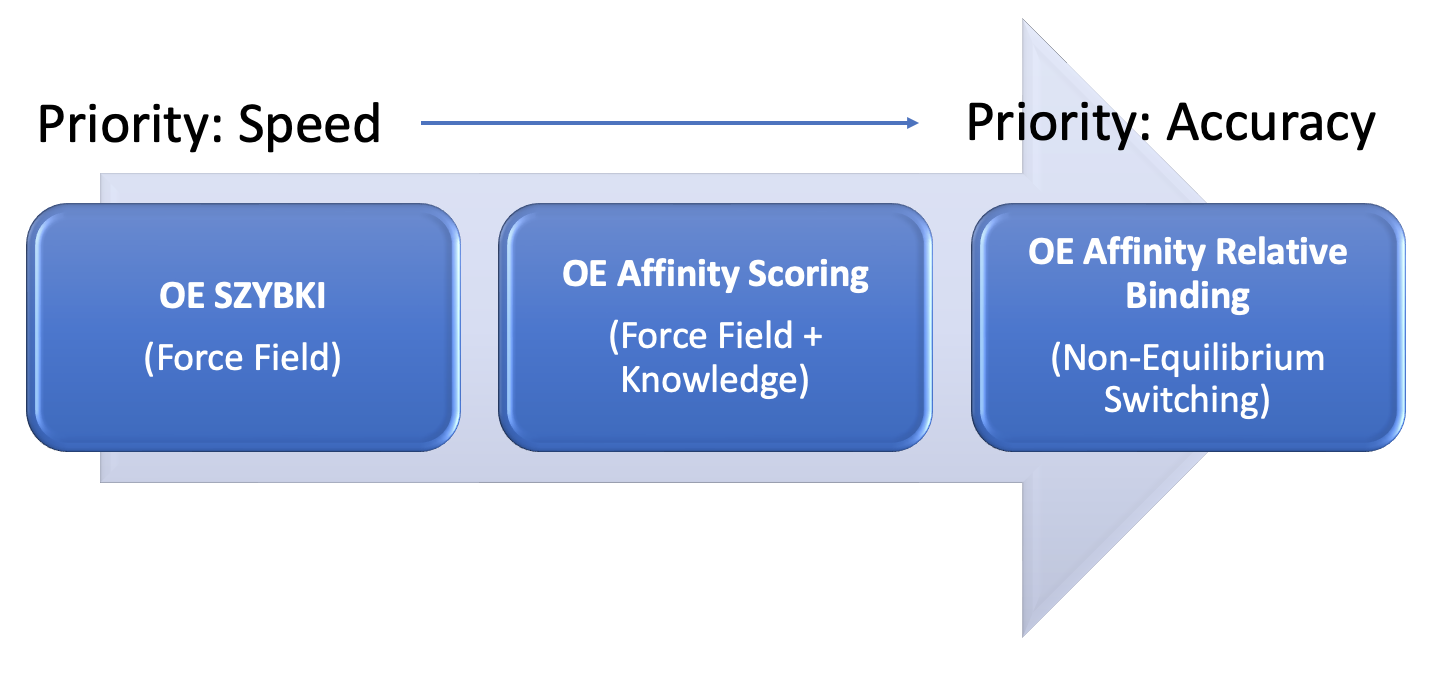
Easy, Efficient, and Automated Mapping
With OE Affinity, users can easily create a mapper and choose from a range of options. The automated edge mappers for connecting ligands in binding free energy calculations include OELOMAP, Star Map, and Binary Star Map, and Multi-Star Map.

Offering Flexibility with the Interactive Edge Mapper
Using the interactive edge mapper, users can seamlessly add or remove edges and generate new star maps with the selected ligand as the central hub. The updated edge map can be saved as a dataset for downstream free energy calculations, allowing users to enhance the edge map with human expertise.

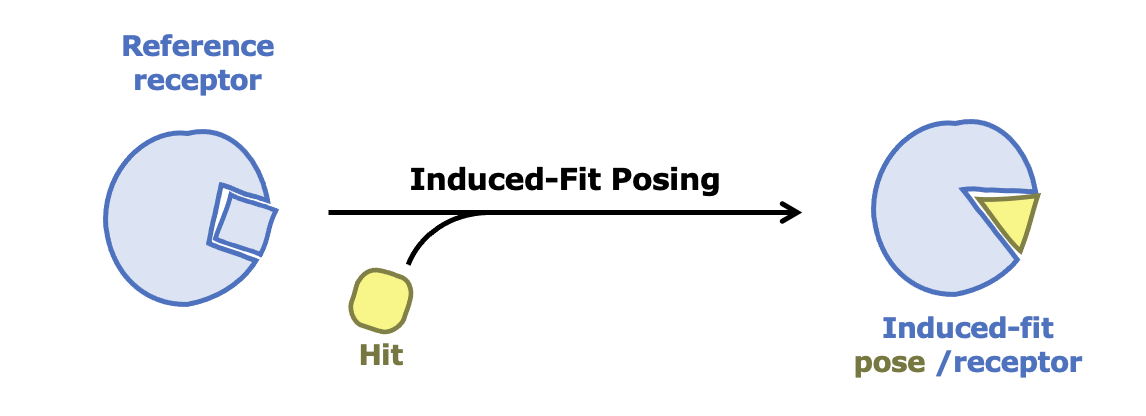
For Proteins with Flexible Binding Sites
To improve your ability to predict ligand binding affinity for proteins with flexible binding sites, consider using both Induced-Fit Posing and OE Affinity Relative Binding. Together, these tools offer more accurate predictions of ligand-protein interactions.
Learn more about Induced-Fit Posing
FAQs
-
OE Affinity Scoring calculates the ensemble average Molecular Mechanics Poisson-Boltzmann Surface Area (MMPBSA) energy and protein-ligand interaction score (knowledge-based scoring). The MMPBSA value represents a Boltzmann-weighted average over all major clusters. The knowledge-based scoring is an ensemble average representation of how stable the overall protein-ligand binding interactions are compared to the starting pose.
OE Affinity Scoring approach of combining physics-based and knowledge-based information quickly evaluates and triages ligands to prioritize the best candidates for further analysis, allowing you an efficient and cost-effective decision-making in the discovery process.
-
Yes, you can optimize your computational resources with OE Affinity Scoring. This combined physics-based and knowledge-based scoring method offers a faster and cost-effective approach to evaluate and triage ligands prior to full OE Affinity Relative Binding calculations. The system setup and short-trajectory MD equilibration performed for OE Affinity Scoring can be utilized for OE Affinity Relative Binding calculations, saving you valuable compute time.
-
Yes. Alchemical changes between ligands of different formal charges is now supported (with the December 2022 release). In addition, edge scores are also calculated for user provided mapper files.
-
OE Affinity offers versatile workflows (Floes) for a personalized experience, with options for both novice and expert users. Choose from pre-configured automated Floes or individual Floes for customized tasks with expert control.
-
Users get a comprehensive and interactive report of binding energy calculations. In addition, users can also seamlessly compare experimental affinity with the computed End-Point-Analysis results (predicted relative binding free energies).
-
OE Affinity Relative Binding offers fast and affordable free energy calculations with its Non-Equilibrium Switching approach. Test cases demonstrate the ability to run dozens of ligands in just a few hours for a low cost of a few hundred dollars.
-
OE Affinity Relative Binding, a highly efficient and cost-effective free energy calculation method, is adapted from the NES approach developed by Vytautas Gapsys in the Bert L. DeGroot Lab at the Max Planck Institute for Biophysical Chemistry.(Gapsys et al., Chem. Sci. 2020, 11, 1140-1152).
With the integration of proprietary OpenEye methods for system pre-equilibration and chimeric-molecule calculation, it delivers quick transitions through intermediate states and parallel sampling of short trajectories. This results in faster, yet equally accurate calculations compared to conventional equilibrium-based methods.
-
The OE Affinity Relative Binding method has been rigorously tested and validated on multiple datasets, including CDK2, PTP1B, Jnk1, p38, Thrombin, MCL1, Bace, and Tyk2. Open Force Field (OpenFF) and GAFF small molecule force field are available.
Kandall’s tau correlations show OpenEye’s method has comparable accuracy, using GAPSYS (2020) and FEP (JACS 15) datasets from literature. Results from these tests demonstrate that OpenEye's method has no significant differences in aggregate performance and is a reliable solution for free energy calculations.
-
Yes, with version 2023.2 and later, the use of the bespoke force field option is now available in Molecular Dynamics and Non-Equilibrium Switching.
-
OE Affinity provides users with a Maximum Likelihood Estimator method to predict the absolute binding affinities starting from the relative binding affinities and a set of reference experimental binding free energies. This estimated value will be provided only if the graph edges are well connected and some experimental binding free energies are provided.
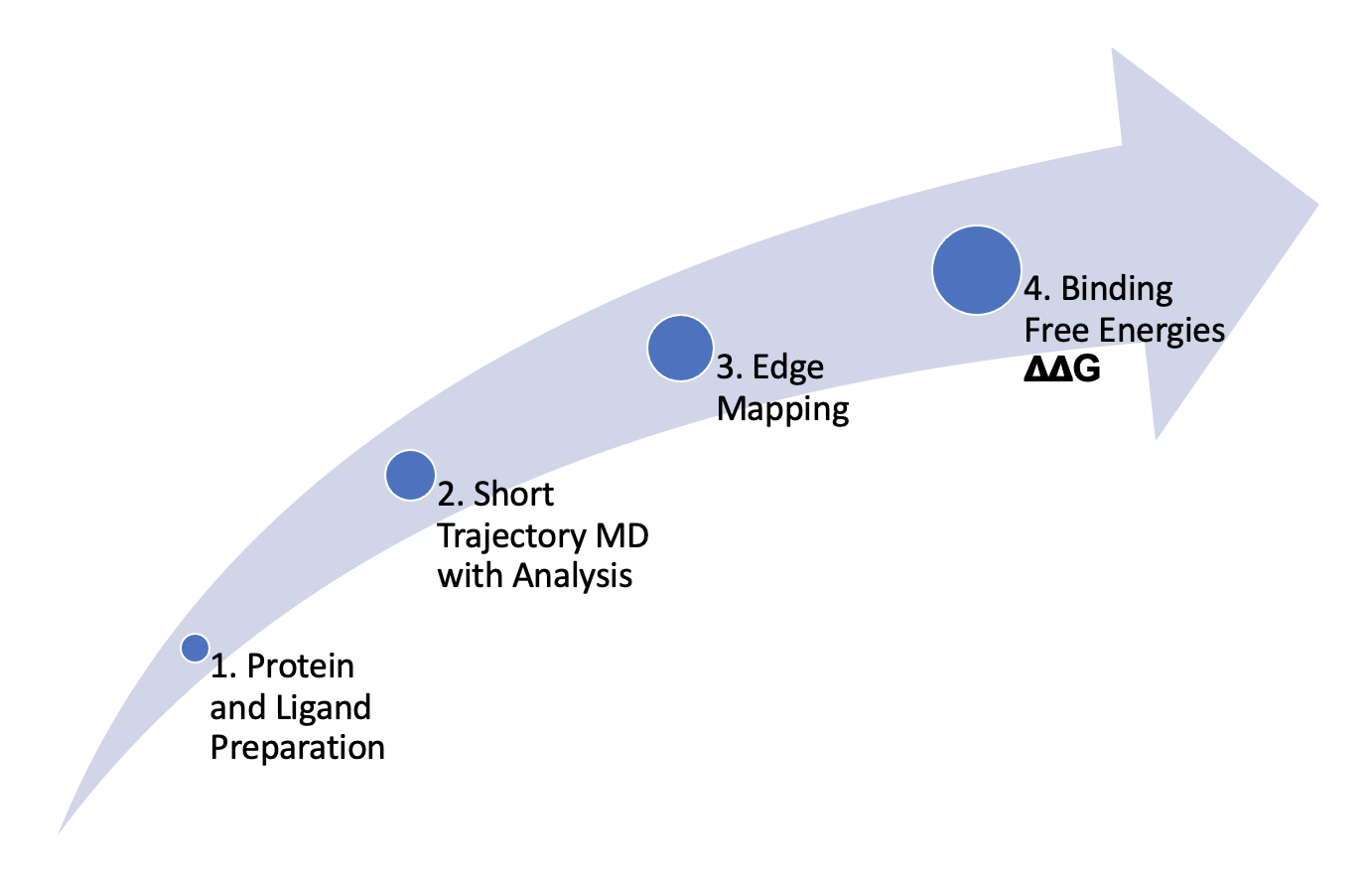
Learn More
OE Affinity can help you estimate relative binding free energies, speed up your drug-design process, and save costs by reducing failure rates.
Download the OpenEye Science Brief to discover how Non-Equilibrium Switching (NES) provides an efficient method for calculating relative binding free energies.
Download the OpenEye Science Brief to explore how Non-Equilibrium Switching (NES) enhances enrichment across a wide range of protein targets and ligand chemistries when calculating relative binding free energies.
For science details, WATCH OpenEye’s miniWebinar recording from September 2021 on Using Non Equilibrium Switching for your Relative Binding Free Energies Calculations by Christopher Bayly, Ph.D.
And WATCH the OE Affinity Mapper feature presented by Gaetano Calabro, Ph.D, from June 2022
References
-
Large scale relative protein ligand binding affinities using non-equilibrium alchemy, Gapsys et al., Chemical Science, 2020, 11, 1140-1152
Over 800x Speed-Up on Orion to Enable Rapid and Reliable Drug Design
Expanding Orion’s Capabilities with AI
miniWebinar | Shape and color: A unifying principle for modeling molecules
miniWebinar: Faster, Larger, Smarter: Filling the Funnel for Ultra-Large Scale Virtual Screening
Resources
Glimpse the Future through News, Events, Webinars and more
Webinar
miniWebinar: Opening up the druggable universe one cryptic pocket at a time
News
Over 800x Speed-Up on Orion to Enable Rapid and Reliable Drug Design



